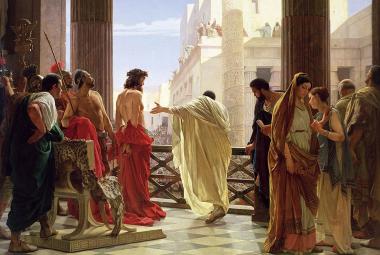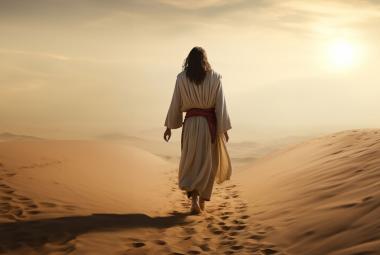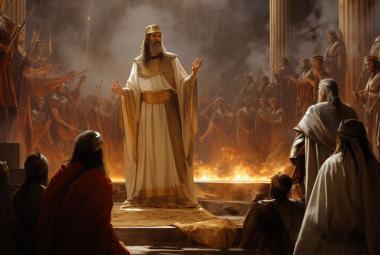Q: Why Are There Four Gospels?
A: Each of the four Gospels presents Jesus Christ from a different point of emphasis.
Matthew
Matthew, being a Levite, emphasizes Jesus as the Messiah, the Lion of the Tribe of Judah. Each of the subtleties of his design supports this primary theme. His genealogy begins with the "first Jew," Abraham, and continues through David and the royal line to the legal father of Jesus, Joseph.
Matthew's emphasis is on the fulfillment of the prophecies of the Tenach, the Old Testament.
As a customs official, Matthew was skilled in shorthand, an essential asset in a culture that did not have the advantages of printing, copiers, and the like. Matthew focuses on what Jesus said, and includes the extensive discourses, which he probably was able to take down verbatim.
Matthew's first miracle is the cleansing of a leper, a Jewish metaphor for sin itself. Matthew concludes with the resurrection, also a distinctive Jewish preoccupation.
Luke
Luke was a Gentile and a doctor, and his Gospel reflects a very distinctive point of view, emphasizing Jesus as the Son of Man. His genealogy begins with Adam, the first man. From Abraham to David, his list is identical to that of Matthew. However, when he gets to David, he doesn't track through Solomon (the first surviving son of Bathsheba) but through a different son, Nathan (the second surviving son of Bathsheba). He continues through to Heli, the father of Mary. (Joseph is the son-in-law of Heli). 1 As a Gentile, Luke's emphasis is different. His emphasis is Christ's humanity; he focuses on what Jesus felt. His first miracle is the expulsion of a demon, a very human concern. Luke concludes with the promise of the giving of the Holy Spirit, which is a natural bridge to his subsequent volume, The Book of Acts .
Mark
Mark is the amanuensis (secretary) for Peter, and he emphasizes Jesus as the obedient Servant of YHWH. His is the only Gospel with no concern for pedigree or genealogy. He focuses on what Jesus did ; it deals in graphic images, almost like a movie or video shooting script. Mark concludes with the final visual appearance, the Ascension.
John
John had a very distinctive view, emphasizing Jesus as the Son of God. He focuses on who Jesus was . His "genealogy" is that of the Preexistent One, constituting his opening verses. His Gospel is organized around seven miracles, seven discourses, and seven "I AM" statements.
John's first miracle involves the use of the water of purification being changed to wine at Cana, a private demonstration to the disciples that Jesus was preeminent even over the Levitical priesthood. John concludes with the promise of Jesus' return, and becomes the appropriate prequel to John's final tome, The Revelation .
The Four Faces Around the Throne
It is interesting that each time we encounter the "super-angels" (variously called cherubim or seraphim ) that surround the Throne of God, we note that there are four "faces" involved: a lion, an ox, a man, and an eagle. 2 These also were the principal tribal standards that rallied the four "camps" of Israel (each camp consisting of three tribes) that encamped around the Tabernacle.3
It is interesting that each of these "faces" are suggestive of each of the four Gospels: Matthew, presenting the Lion of the Judah; Mark, the ox (the classic emblem of servanthood); Luke, the Son of Man; and John, the Son of God in the heavens. After you have explored our summary resource, Learn the Bible in 24 Hours, you are encouraged to examine, in depth, the four Gospels to experience the skillful design that lies behind the familiar episodes. They are, indeed, inexhaustible. But that's what you would expect from The Word of God. Good hunting!
The Gospels of Matthew, Mark, Luke and John, as well as the "5th Gospel," the Book of Acts, are now available on MP3 CD-ROM.
Notes:
- The term in Luke 3:23 is nomizo in Greek: reckoned as by law. Joseph was adopted by Heli in accordance to the exception in the Torah for inheritance through brotherless sisters given to Zelophehad (Numbers 27:1-11; Joshua 17:3-6; Ezra 2:61; cf. Nehemiah 7:63; Numbers 32:41; 1 Chronicles 2:21-23, 34-35).
- Ezekiel 1:10; 10:14; Revelation 4:7.
- Numbers 2.






